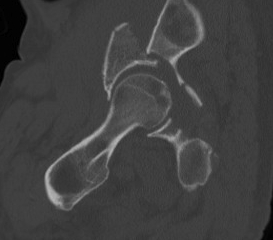Many previous studies based on clinical biomechanics and anatomic superior articular surface of acetabulum showed different degrees of the angles.
Roof arc angle acetabular fracture.
Roof arc angle angle between vertical line through femoral head and line through fracture helps to define fracture pattern stability considered stable if the fracture line exits outside the weight bearing dome of the acetabulum.
Such fractures divide the acetabulum into an upper portion ilium with the roof and a lower portion ischium and pubis.
The medial roof arc angle was 46 6 3 anterior roof arc angle was 52 7 0 and posterior roof arc angle was 62 8 5.
For surgically treated fractures with residual steps and diastases after operation the correlation between steps and 2 year outcome was good.
Acetabular fracture involves whether superior articular weight bearing area and stability of the hip are assessed by acetabular roof arc angles comprising medial anterior and posterior.
In acetabular fracture a medial roof arc angle less than 46 degrees an anterior roof arc angle less than 52 degrees or posterior roof arc angle less than 61 degrees is considered to be involved in a weight bearing area.
Conclusions in acetabular fracture a medial roof arc angle less than 46 an anterior roof arc angle less than 52 or posterior roof arc angle less than 61 is considered to be involved in a weight bearing area.










